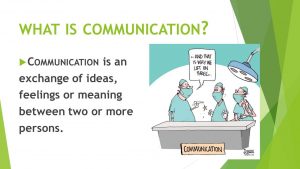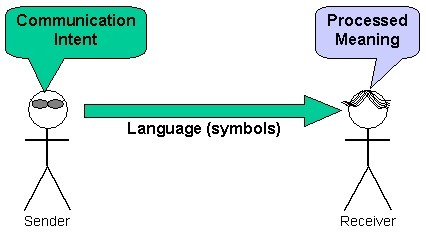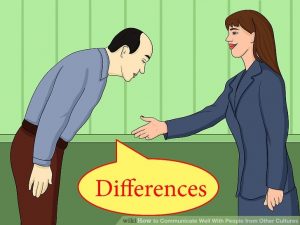Communication helps people to perform their jobs and responsibilities. Communication serves as a foundation of human life. All the essential information in regards to feelings and emotions are communicated to others in society who in-turn communicate their responses. The smallest of event in one’s life requires organizing which requires effective communication with others.
Models of communication are conceptual models used to explain the human communication process. We study models because they make us understand a concept easi ly and clearly. Through a model one can easily understand a process and draw conclusions from it. In simpler words a model makes the learning simpler. An individual must possess excellent communication skills to make his communication effective and create an impact among the listeners. The speaker must know where to take pauses, where to repeat the sentences, how to speak a particular sentence, how to pronounce a word and so on. The speaker must not go on and on. He should also make a point to cross check with the recipients and listen to their queries as well. An individual must take care of his accent while communicating. A bad accent leads to a boring conversation.
ly and clearly. Through a model one can easily understand a process and draw conclusions from it. In simpler words a model makes the learning simpler. An individual must possess excellent communication skills to make his communication effective and create an impact among the listeners. The speaker must know where to take pauses, where to repeat the sentences, how to speak a particular sentence, how to pronounce a word and so on. The speaker must not go on and on. He should also make a point to cross check with the recipients and listen to their queries as well. An individual must take care of his accent while communicating. A bad accent leads to a boring conversation.
A communicator’s attitude matters. It is rightly said that if one has the right attitude, the whole world is at his feet. There is actually no stopping for the person if he has the right attitude. A person might be a very good speaker but if he doesn’t have the right attitude, he would never emerge as a winner. He must possess knowledge. He must have the clarity of the information which he wants to convey to the listeners. One must be thorough in what he is speaking with complete in-depth knowledge of the subject. Questions can pop up anytime and the speaker must be ready with answers.
Besides the attitude, knowledge the communicator must be aware of the Social System. Especially politicians must be most aware of the social system. A politician delivering a speech where he proposes to construct a temple in a Muslim dominated area. What would be the reaction of the listeners? They would obviously not be interested. Culture refers to the cultural background of the community or the listeners where the speaker is communicating or delivering his speech.
Here are a few communication models:
Aristotle: was the first to take an initiative and design the communication model. According to this model, the speaker plays a key role in communication. He is the one who takes complete charge of the message. The sender first prepares a content which he does by carefully putting his thoughts in words with an objective of influencing the listeners or the recipients. The listeners respond to the thoughts of the speaker positively or negatively depending on the contents. Aristotle model emphasizes on very impressive contents from the speaker; the audience or the receivers need to get convinced. The model says that the speaker communicates in such a way that the listeners get influenced and responds accordingly. The speaker must be very careful about his selection of words and content in this model of communication.
The Berlo’s model of communication:
This model takes into account the emotional aspect of the message. Berlo’s model of communication operates on the SMCR model.
In the SMCR model
S – Stands for Source
M – Message
C – Channel
R – Receiver
The source in other words is also called the sender is the one from whom the thought originates. He is the one who transfers the information to the receiver after carefully putting his thoughts into words. The sender transfers his information to the recipient with the help of communication skills, Attitude, Knowledge, Social System and Culture.
M – Message: When an individual converts his thoughts into words, a message is created. The process is also called as Encoding.
Any message further comprises of the following elements:
C – Content: One cannot show his grey matter to others to let him know what he is thinking. A thought has to be put into words and content has to be prepared. Content is actually the matter or the script of the conversation. It is in simpler words, the backbone of any communication.
R – Receiver: When the message reaches the receiver, he tries to understand what the listener actually wants to convey and then responds accordingly. This is also called as decoding. The receiver should be on the same wavelength as the speaker for smooth flow of information. If the speaker is going to speak on a topic of saving trees, and receiver is a builder who wants to chop trees for his upcoming construction both speaker and listener won’t enjoy the topic because they are on different perspectives.
Shannon and Weaver model: This is the most popular model of communication and is widely accepted all over the world. Shannon and weaver model simply proposes that a message actually originates from the person who gets the thought or has the information. The sender is also called the Source of information or the Information Source. The information then gets transmitted from the brain to the mouth and comes out as a signal which then reaches the recipient after joining hands with several noises and other disturbances. The recipient then further passes on the message to its final destination or other minds of other individuals.
Concepts in Shannon Weaver Model
Sender (Information source) – Sender is the person who makes the message, chooses the channel and sends the message.
Encoder (Transmitter) –Encoder is the sender who uses machine, which converts message into signals or binary data. It might also directly refer to the machine.
Channel –Channel is the medium used to send message.
Decoder (Receiver) – Decoder is the machine used to convert signals or binary data into message or the receiver who translates the message from signals.
Receiver (Destination) –Receiver is the person who gets the message or the place where the message must reach. The receiver provides feedback according to the message.
Noise –Noise is the physical disturbances like environment, people, etc. which does not let the message get to the receiver as what is sent.
This model takes communication as a two way process. It makes the model applicable in general communication.
Schramm’s Model of Communication:
Wilber Schramm proposed the model of communication in 1954. Information is of no use unless and until it is carefully put into words and conveyed to others. Encoding plays a very important role because it initiates the process of  communication by converting the thought into content. Encoding means to convert body of information from one system to another system in the form of codes; and code is the system of symbol, sign or letters. When the information reaches the recipient, his prime responsibility is to understand what the speaker intends to convey. Decoding means that communication process is continuous. There is no end in it, because one encodes the message and the other decodes the message. Unless and until the second party is able to understand or decode the information what the sender wants to communicate, the message is actually of no use. Thus encoding and decoding are two most important factors of an effective communication without which information can never flow between two individuals. Schramm’s model also revolves around the above principle. According to the Schramm’s model, coding and decoding are the two essential processes of an effective communication.
communication by converting the thought into content. Encoding means to convert body of information from one system to another system in the form of codes; and code is the system of symbol, sign or letters. When the information reaches the recipient, his prime responsibility is to understand what the speaker intends to convey. Decoding means that communication process is continuous. There is no end in it, because one encodes the message and the other decodes the message. Unless and until the second party is able to understand or decode the information what the sender wants to communicate, the message is actually of no use. Thus encoding and decoding are two most important factors of an effective communication without which information can never flow between two individuals. Schramm’s model also revolves around the above principle. According to the Schramm’s model, coding and decoding are the two essential processes of an effective communication.
The Helical Model of communication:
It was proposed by Frank Dance in 1967 to throw some more light on communication process. Dance thought of communication process similar to helix. What is a helix? A Helix is nothing but a smooth curve just like a spring which if goes upwards also comes downwards. The Helical model of communication was designed by Frank Dance keeping the simple Helix in mind. A child from the very moment he comes to this world starts communicating. When a baby is born, t he nurse rubs his back to make the child cry. If the child doesn’t cry, it is an indication of a still born child. A child’s crying refers to his being alive. As the child grows up, he cries whenever he is hungry or expects something from his parents and sometimes simply for his parent’s attention. When the same child grows up and starts going to school, he soon interacts with his parents, teachers, friends in the form of words. Now crying actually gets replaced by words or his speech but one thing which is common is the process of communication which existed since the child’s birth. Thus the child actually started communicating from the very first day of his life and has been communicating all through till the present day.
he nurse rubs his back to make the child cry. If the child doesn’t cry, it is an indication of a still born child. A child’s crying refers to his being alive. As the child grows up, he cries whenever he is hungry or expects something from his parents and sometimes simply for his parent’s attention. When the same child grows up and starts going to school, he soon interacts with his parents, teachers, friends in the form of words. Now crying actually gets replaced by words or his speech but one thing which is common is the process of communication which existed since the child’s birth. Thus the child actually started communicating from the very first day of his life and has been communicating all through till the present day.














































